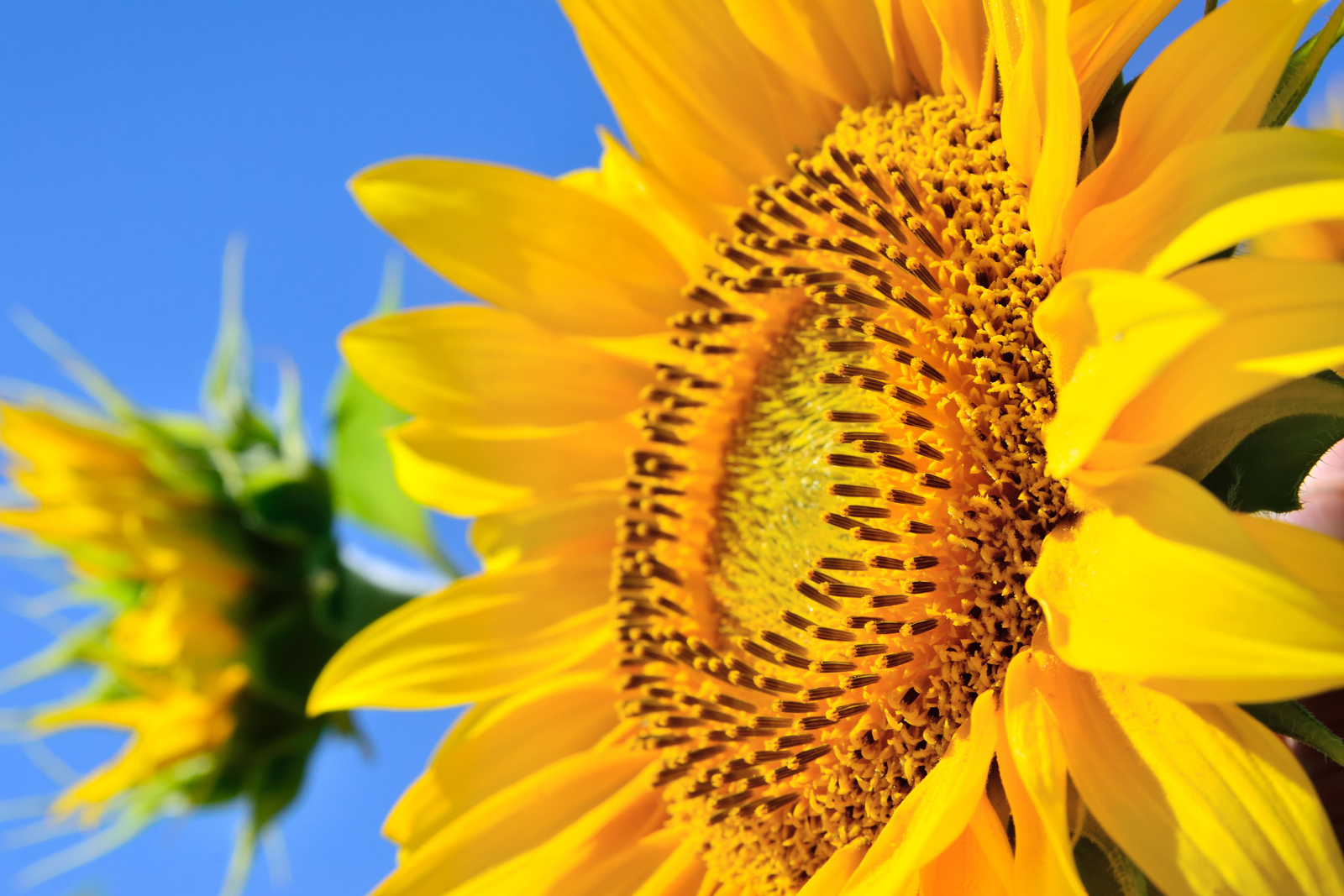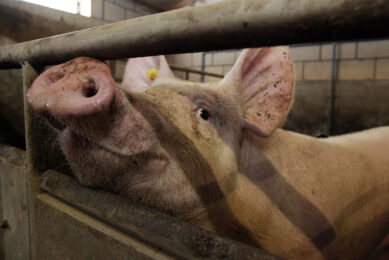Piglets can thrive on sunflower meal

With a novel processing method, feed ingredients like rapeseed cake as well as sunflower meal can be used in piglet feed, as it is better digested. According to recent research, this way also expensive soy can be replaced.
Two main themes dominate the public debate around feed mix formulation. First of all, predominantly animal welfarists are discussing to raise the levels of crude fibres. In a draft bill to change German animal welfare legislation in 2013, a 5% level was demanded. At the time, this was justified by higher crude fibre levels leading to a better gut health. Common these days, however, are levels of 2.5 to 4%.
Pig producers usually retort that higher fibre levels reduce feed digestibility and thus lead to worse performance and higher excretion levels – it’s a Gordian knot that is impossible to disentangle. Nevertheless, recent research in Schwarzenau, Bavaria, Germany, indicates that levels of around 5% crude fibre in piglet feed doesn’t necessarily have to lead to worse performance.
The other theme that is widely being discussed is soy – and the preference by many non-governmental organisations (NGOs) to reduce the usage of genetically modified versions of extracted soymeal. This is related to the cultivation in North and South America, which can hardly be called sustainable. Soybeans, grown in Europe (non-GMO), are considered acceptable though.

Multistage technological treatment
Making such diverging interests coincide has been the task for institutes like the State Institute for Agri- and Horticulture (LLG) of Saxony-Anhalt in Germany. In the institute’s search for solutions, a feed miller from Croatia came into view, which offered appropriate ideas. The company Fanon from Petrijanec, not far from both the borders with Hungary and Slovenia, is applying a process called ‘Long Term Conditioning and Liquification’ (LTCL). Key here is a multistage technological treatment approach for feedstuffs, including e.g. a special structuring; targeted, raw material dependent steam conditioning, to be followed by hydrothermic processing under pressure.
This way, non-GM soybeans, grown in Croatia, can be treated so that urease activity is eliminated and further anti-nutritional feedstuffs are clearly reduced. The same applies to protein components like sunflower meal or coproducts from rapeseed, which could be used in feed rations after this technological process. In Croatia this has happened mostly in poultry production.
How about pig feed?
The idea came up at the LLG to set up a similar trial for piglets. In the feed formulation of the experimental rations for the weaning and grower phases, the use of soymeal was completely banned, also see Table 1. Soybeans were present in the control feed, sunflower extract meal and rapeseed cake were used as protein and crude fibre sources in the trial feed. These were first run through an LTCL process.
The effect of the process could be demonstrated by showing differences in crude fibre, neutral detergent fibre (NDF) and acid detergent fibre (ADF) levels in both calculated as well as analysed values. The high crude fibre, ADF and NDF values, calculated on the basis of standard values, were not found any more in the analysis.
Although a crude fibre level of 6.9% was calculated in the grower feed of the trial group, in fact only 4.6% was found. That made clear, that due to the treatment of the fibre carriers, the crude fibre would also most probably be better digestible in the large intestine, as fermentation is easier.
To test this, a feeding trial took place at the LLG in Iden with both alternative feed ingredients, being sunflower meal and rapeseed cake. The trial was carried out with 200 crossbred piglets, one half receiving a control diet (soymeal) and the other received a trial diet (sunflower meal and rapeseed cake). In total, the trials were repeated five consecutive times. The proportion of male and female pigs was identical in both diet groups. The results of the feed analysis showed a great similarity with the calculated data with regard to protein and amino acid values. The energy values together are even higher than calculated, but between the groups they are comparable.
Hardly any difference in growth
Figure 1 shows the piglet growth. In the total scores of all five trial phases, significant differences could be seen in the first grower phase. In this phase, the piglets of the trial group grew about 25 g extra per day. In the second growth phase, the piglets of the control group caught up with them, so over the total research period, no differences in the growth results could be noted. Altogether, with both feed concepts, very high results could be achieved. Leaving soymeal out did not lead to negative consequences. Replacing it with pressure hydrothermically treated components of sunflower meal and rapeseed cake proved to have equal values.
With regard to feed usage and conversion, there were hardly any differences identifiable between the feed concepts, see Tables 2 and 3. Feed intake and digestibility were identical in both strategies. This could be confirmed, that the feed ingredients sunflower meal and rapeseed cake, which are usually not very well digested by piglets, could be mixed in with rather large proportions, and were proved to be usable for the animals after all after the hydrothermical process. After LTCL treatment, these protein components could even completely replace soymeal. In the scope of the trial the faecal consistency was also observed. Here a clear influence of the fibre was observed. The trial group piglets had a more stable faecal consistency, which can be interpreted as an indication of better gut health.
Conclusion
A feed trial with grower pigs showed that with technically enhanced feed ingredients like sunflower meal and rapeseed cake an adequate replacement is available for soymeal in grower feeding. Moreover, a higher share of crude fibre in these components did not have a negative influence on growth and ration digestibility. On the contrary: a positive influence on the intestinal health was observed on the basis of a better faecal consistency.
This article appeared first in German in the DLZ Agrarmagazin Primus Schwein.
Join 26,000+ subscribers
Subscribe to our newsletter to stay updated about all the need-to-know content in the feed sector, three times a week. Beheer
Beheer









 WP Admin
WP Admin  Bewerk bericht
Bewerk bericht